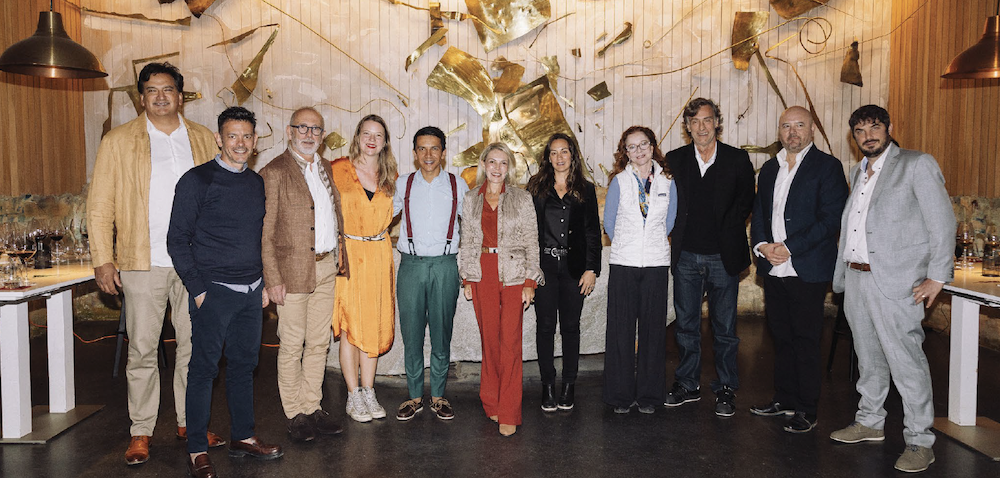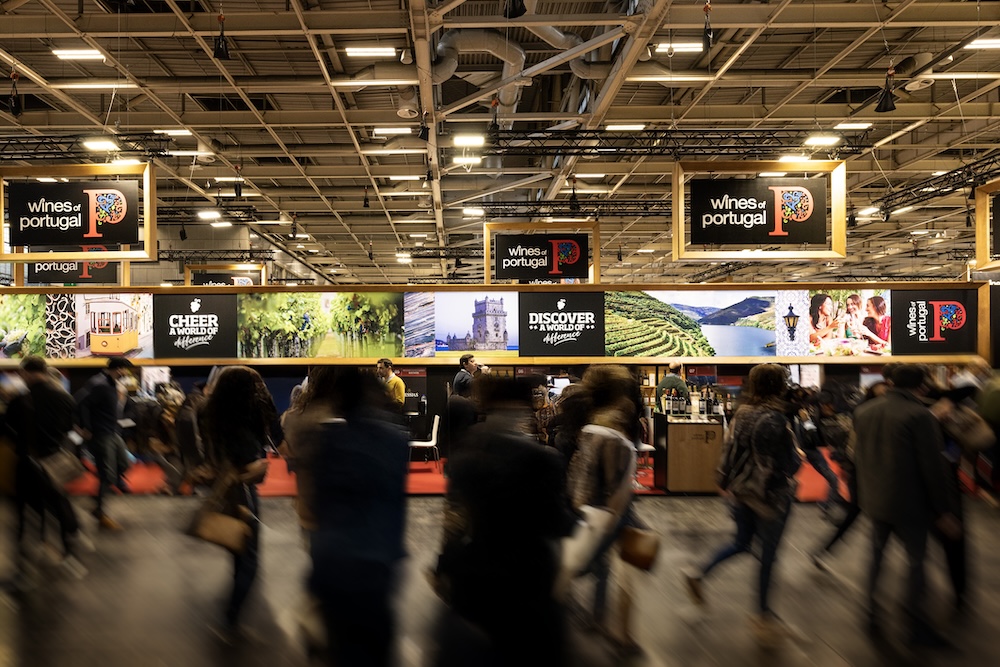
Discovery

Discovery
By By Santiago Jimenez, posted on 29 March 2022
Port wine is one of Portugal’s oldest global ambassadors. There are few places in the world where wine has had such a remarkable influence as in the Douro. Consumer tastes have shifted though, from sweet to drier offerings. Santiago Jimenez goes on a journey along the region’s iconic river, seeking out, not its storied fortified wines, but the more recent addition to its present-day portfolio – still wines.
Wine has been grown in the region for over 2,000 years. Originally, wines leaving the area, destined mainly for England, were unfortified. However, they failed to reach English shores in good condition so producers found a suitable way of ‘fortifying them’ and allowing them to reach their destination in perfect condition. This technique has continued and ‘fortified’ wines long enjoyed great popularity. In recent years, however, consumer tastes have changed and unfortified Douro wines have returned to the fore. The still wines grown across the region have gained a strong presence in the marketplace because modern technology has promoted the advent of top Douro wines.$
Located in the middle of the Douro valley is one of the oldest and most emblematic farms in the region: Quinta Nova de Nossa Senhora do Carmo. Its wines are iconic and highly valued by the trade and consumers. These are wines that faithfully reflect, in an extraordinary way, the exclusive character of the micro-terroirs – the farm, which is over 250 years old, has 41 vineyard plots.
It covers 120 hectares, stretching along 1.5 km on the right bank of the river Douro, almost 80 of them planted to vines, nestled in a setting listed as World Heritage by UNESCO.
The name, ‘Nossa Senhora do Carmo’ has its origins in the 17th century, in a small chapel constructed on the bank of the river Douro to protect the sailors of the ships transporting Port wine.
In 1999, the history of the winery took an important turn when the Amorim family – who in 2020 celebrated the 150th anniversary of their first business, making cork stoppers for Bodegas de Oporto in Vila Nova de Gaia – purchased Quinta Nova, consolidating their long-standing relationship with the world of wine.
Luisa Amorim joined the company. She saw a great similarity between the wine and cork businesses: proximity to nature, international relations and patience were aspects to which she was already accustomed in her professional life. In two decades under her leadership, the ‘new’ Quinta Nova was redesigned. Important contributions to this renaissance included the planting of 50 hectares of vineyards with a view to adding value to the excellence of the wine region and bringing present-day hectareage of planted vineyards up to 85.

The focus and objective of Luisa and the five winemakers at the winery is achieving perfection in the wines. They travel throughout the world and welcome winemakers from across the globe to glean information. They rigorously analyse the grapes from the vineyard’s 41 different plots. They observe every stage of the winemaking process to try and understand what is best for their grapes as this is the means by which they intend to achieve perfection.
There are 100-year old terraces at Quinta Nova, divided into two extraordinary plots: a 2.5-hectare plot and another covering 4.5 hectares. The vineyards are a unique genetic heritage, given their enormous size. All the vines were planted immediately after phylloxera (some 80 different grape varieties) which have lasted until now to produce high quality wines. Yielding very low output, the vines are tended using traditional methods, where the soil is farmed using time-honoured techniques – a horse and plough – and fertilized organically with the objective of preserving Douro history and safeguarding tradition.
In the vineyards, in addition to the 80 native varieties which are preserved with great care and represent some 12% of total vineyard acreage, there is also Touriga Nacional (20% of total acreage), Touriga Franca (24%), Tinta Barroca (11%), Tinto Cão (6%), Tinta Roriz (17%), Tinta Amarela (%), Souzão (3%) and Tinta Francisca (3%).
To add one last noteworthy detail, Quinta Nova is the 11th largest winery for Port wine sales by volume in the world. Its wines can be found in 27 international markets, mainly in Brazil, Switzerland, Canada and the United States. There are plans to remodel the winery in 2022.
In addition to its commitment to the environment and to its consumers, Quinta Nova is closely involved with the community through foundations like Associação Bagos d´Ouro, an institution which supports the education of 150 underprivileged children and young people. It is jointly run with 21 recognized wine producers in the area, creating a more balanced and, above all, a more inclusive Douro.
This winery was founded in 1999 under the name of Vinhos do Douro Superior VDS (Wines of the Upper Douro) and in 2000, at the turn of the 21st century, the brand Castello d’Alba was launched. The overriding aim from the start has been to produce top quality wines, showing Douro character and an international profile, by combining native grape varieties with cutting-edge winemaking techniques.
Since then and up until now, the winery has been acquiring new vineyards, and launching new wines until 2013 when the winery changed its name to ‘Rui Roboredo Madeira - Vinhos do Vale do Douro’. This change was intended to “reflect the dedication and personal hallmark on the project created by Rui Roboredo Madeira and to which he has dedicated a great part of his life, thereby achieving a broader positioning with signature wines.”
One year later, the winery launched wines carrying his name ‘Rui Roboredo Madeira’ and since then, it has been investing and remodelling.

The winery is synonymous with fine wines from the Douro Valley. Constant investment in pioneering concepts and the purity of its wines have set it apart. It sets great store by the vineyards in the Upper Douro Valley and in mountain wines. As a spokesperson from the winery says, “Each wine bearing the signature Rui Roboredo Madeira has a story to tell, marking the best moments in life.”
Rui Roboredo worked in various wine regions before settling down in the area where he really wanted to be. As he says himself, “Having travelled through many of the winemaking regions of the world and learned about their practices, I returned to the Upper Douro, convinced of its great potential to make world class wines. Showing respect for nature in the way we grow our vines, my wines reflect my experiences, and their aroma and taste are those of my land. It is in my winery that I create wines with the character of our terroir, expressed through native grape varieties, on which I put my imprint and instil international character. This is my life’s passion: the wine of the great Douro Valley.”
The winery covers a total 107 hectares of owned vineyards, 27 of them farmed organically. It sells some 1.6 million bottles annually and exports to 17 countries. In reality, however, exports represent 25% of total sales, so the domestic market holds an impressive share.
Located 50 km South of Lisbon, Barao del Vilar is a company where the team is wholly committed to the creation of value. The staff is motivated, competent and innovative, and its mission is to make wines that live up to customer expectations at a competitive price, while still preserving the highest standards of quality and food safety – the ultimate aim is to establish a relationship based on trust and loyalty.
The company’s institutional name goes back to a title of nobility conferred by the Queen of Portugal Maria II on Cristiano Nicolau Kopke, the first Baron of Vilar, in 1836. Through inheritance, the title remains the legitimate possession of the family heirs.

The winemaker here is Alvaro Van Zeller who studied agronomy in Brazil, followed by post-graduate studies in Bordeaux, where he obtained a DEA in Viticulture and Oenology. Subsequently, he joined Quinta do Noval where, at an early age, he took over total responsibility for blending, wine tasting and all winemaking duties. Later, he was recruited as the head of wine tasting at the IVDP (Porto and Douro Institute of Wine) where all Port and Douro wines are approved and certified. During his career, he had a varied range of experience in other wineries in the region before making a complete change and assuming total responsibility for all wines made by Barão de Vilar, S.A.
The wines are made from Touriga Nacional, one of the most famous grapes in Portugal, but other grape varieties such as Touriga Franca, Tinta Barroca, Tinta Francisca, Tinto Cão, Alicante Bouschet, Sousão and Tinta Amarela are also used. This combination, coupled with the region’s climate, which is strongly influenced by the Atlantic, has allowed the winery to produce consistently structured and balanced wines.
The vineyards, both Quinta de ZOM and Quinta do Saião, are located in the sub-region of the Upper Douro, which is drier and warmer than other sub-regions in the Douro (Baixo Corgo and Cima Corgo).
Wine production here is mainly sustainable, with 10 hectares of vineyards classified as organic.

Discovery

Discovery

Discovery